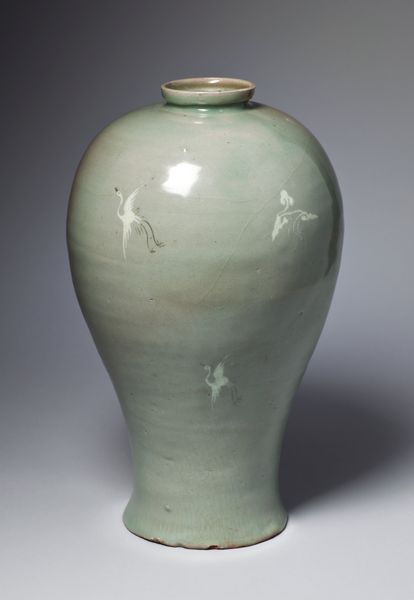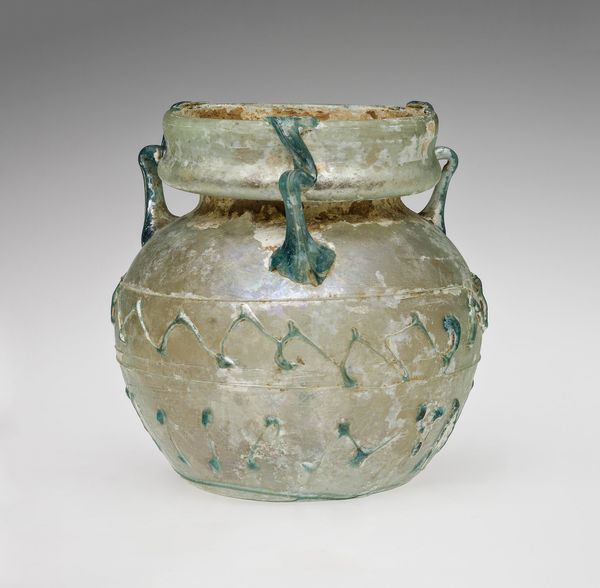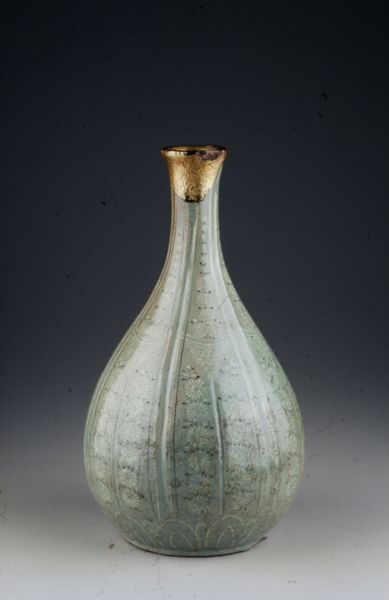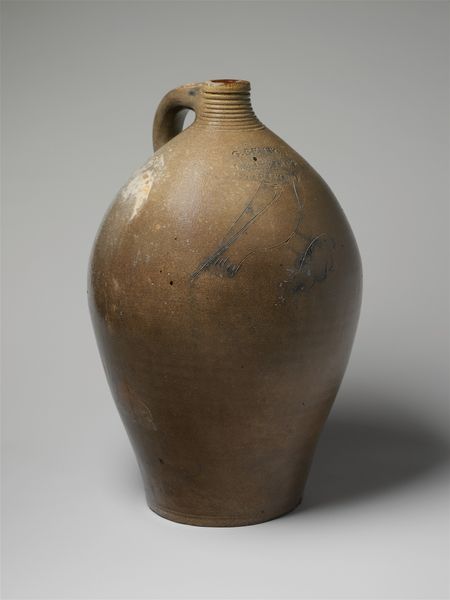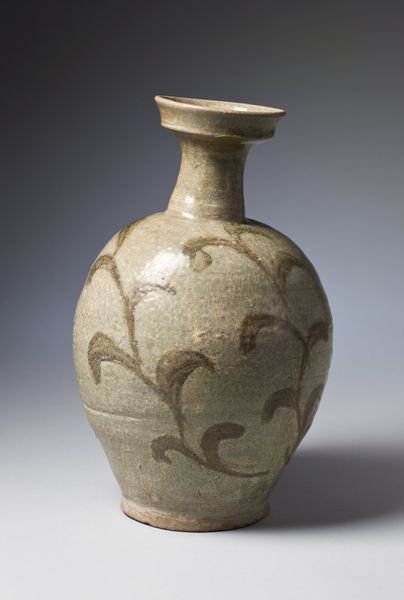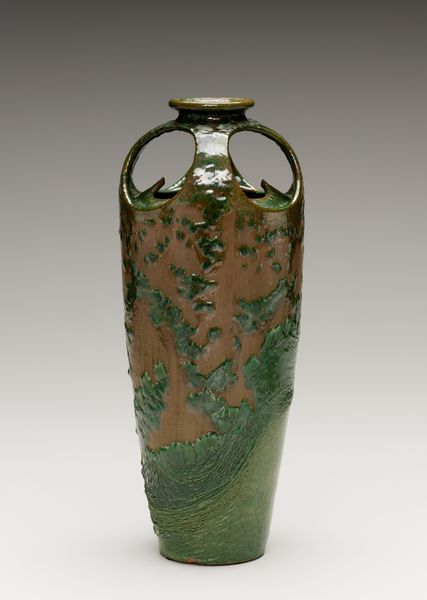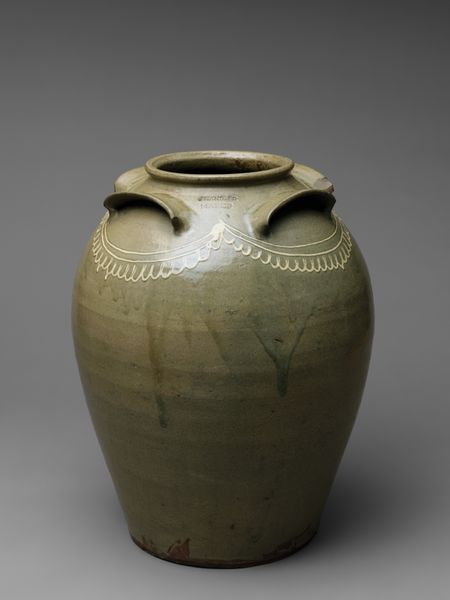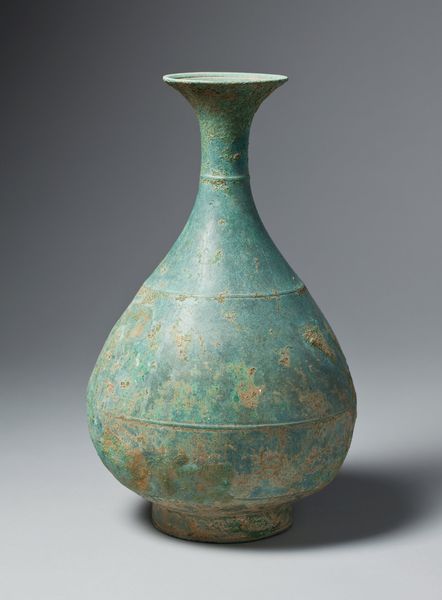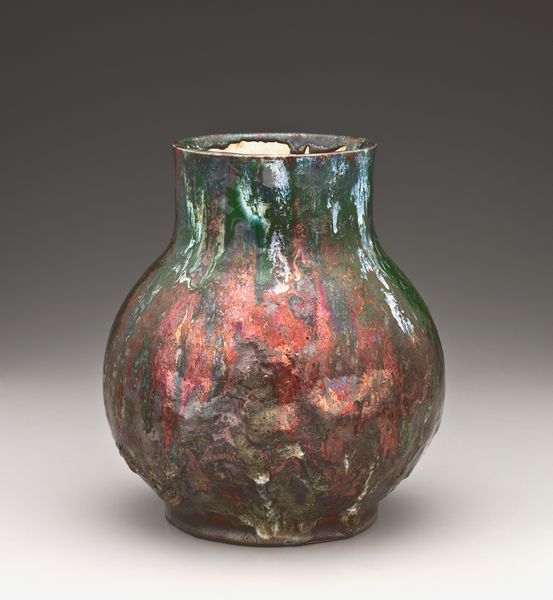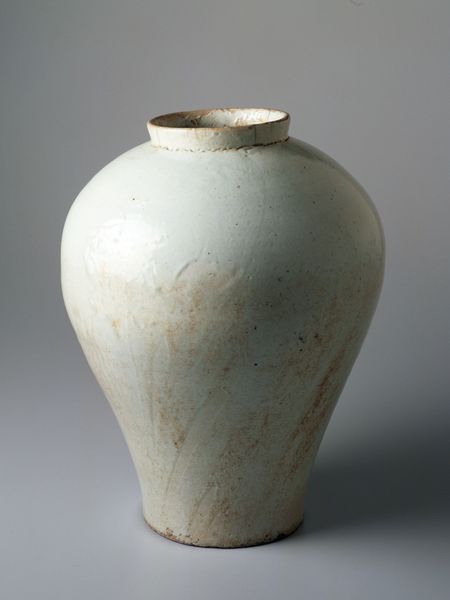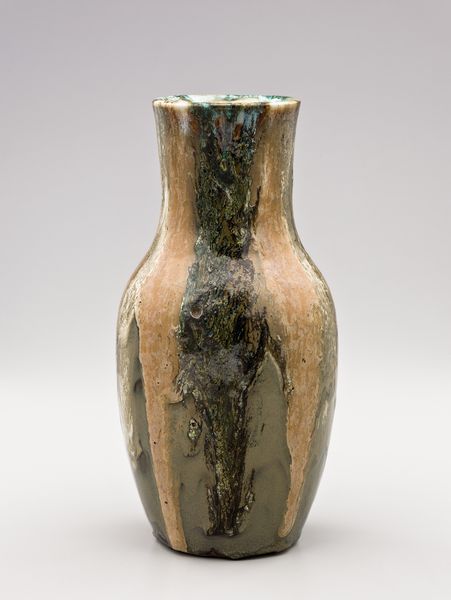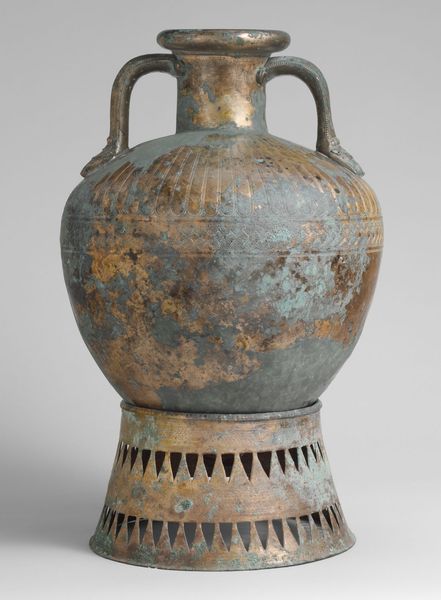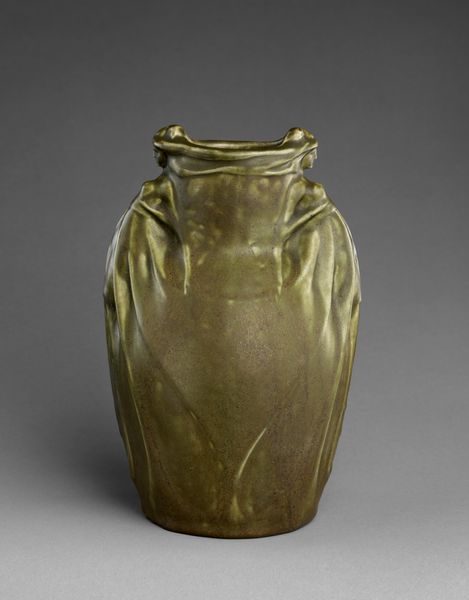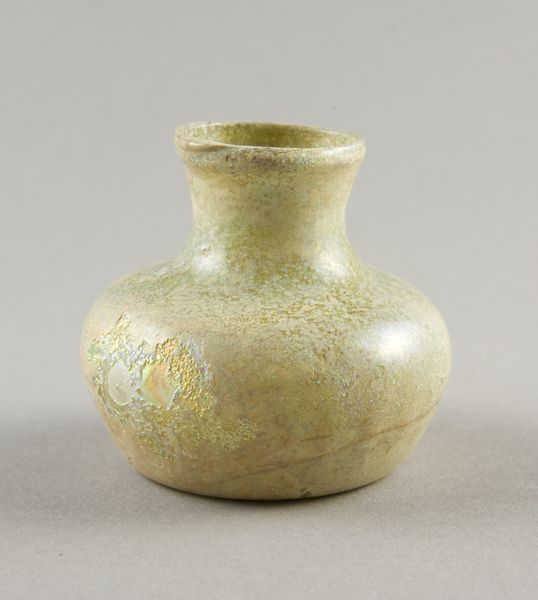
ceramic
#
medieval
#
asian-art
#
landscape
#
ceramic
#
form
#
vessel
#
stoneware
#
ceramic
Copyright: Public Domain
Curator: Standing before us is a Korean Maebyeong vase dating from around the 13th century, now residing here at the Minneapolis Institute of Art. Editor: My first thought is one of delicate transience. The pale celadon glaze and ethereal imagery evoke a feeling of sky and wind; it’s very calming. Curator: Indeed. The form itself, this elegant silhouette with a narrow base expanding to a rounded shoulder, guides the eye upwards, mimicking the very act of flight depicted. Notice the distribution of the cranes and clouds; they're not merely decorative. Editor: Absolutely. The negative space around the motifs is just as crucial. It avoids visual clutter and contributes to the sense of boundless atmosphere. I find it interesting that objects such as this Maebyeong were reserved for nobility; an example of the cultural elite setting a trend in art at the time. Curator: Precisely. The celadon glazing process, a jealously guarded secret, was achievable through a combination of the precise formulation of iron-rich glaze applied and meticulous control of kiln atmosphere and temperature. Each pot represents untold time and knowledge. We have the cultural symbolism of cranes that represented longevity, or the representation of status with clouds representing cosmic energy to the nobility. They reinforced the power dynamic through aesthetics. Editor: I agree. Beyond technique and utility, these stoneware ceramics have an emotional presence. There is a sense of serenity in their minimalist landscapes that goes beyond mere ornamentation, doesn't it? Curator: I'd venture to say it even embodies the Zen aesthetics popular in certain sectors of 13th-century Goryeo society. There’s an intrinsic balance, from the glaze color to the depicted scenes, which brings together many forms of thought that were both abstract and deeply embedded into everyday life at the time. Editor: It’s remarkable how this single piece, by means of form and depiction, is a cultural object as much as an artistic one. Curator: Precisely. In its quiet sophistication, the Maebyeong is a symbol of art’s entwined ability to delight our senses and speak of something grander.
Comments
No comments
Be the first to comment and join the conversation on the ultimate creative platform.
